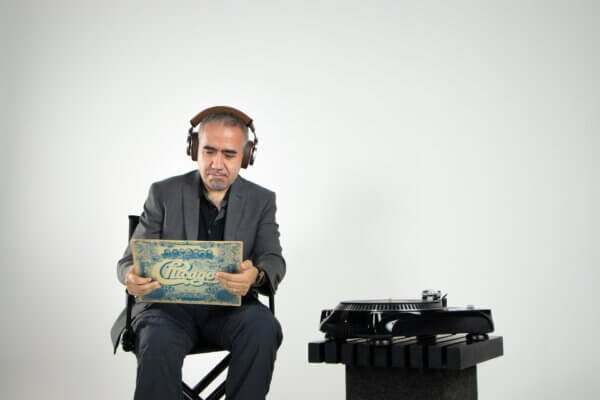Cách Vượt qua Kỳ thi OET: Mẹo và Bí quyết Thực tế
Prep guide: OET preparation tips
Dưới đây là một số gợi ý về chuẩn bị kỳ thi tổng quát mà bạn nên tuân theo trước khi bạn đặt lịch thi và bắt đầu chuẩn bị cho kỳ thi OET.
1) Hiểu rõ mức độ chuẩn bị mà bạn cần thực hiện
Đối với nhiều nghề y tế, bạn cần đạt điểm B để đậu - tương đương với mức C1 trên Khung tham chiếu chung Châu Âu (CEFR). C1 cho biết bạn có trình độ tiếng Anh ở mức cao cấp hoặc thành thạo. Số lượng chuẩn bị mà bạn cần thực hiện sẽ phụ thuộc vào trình độ tiếng Anh hiện tại của bạn.
Trong bài viết trước về Câu hỏi thường gặp về OET, bạn có thể tìm thấy thông tin chi tiết hơn về các điểm OET và so sánh với mức độ CEFR. Có cũng thông tin về OET Pulse (một bài kiểm tra trình độ do OET cung cấp với một khoản phí nhỏ).
Bạn cũng có thể xác định trình độ hiện tại của mình bằng cách xem xét kết quả thi trước đó (FCE, CAE, kì thi đại học v.v.) hoặc hỏi một gia sư tiếng Anh riêng để được hỗ trợ. Một số học viên tiến bộ nhanh hơn người khác, nhưng thường cần khoảng 2.000 giờ học để chuyển từ trình độ A1 (Sơ cấp) lên trình độ C1 (Cao cấp).
Khi bạn biết trình độ khởi đầu của mình, hãy tạo lịch học để lên kế hoạch chuẩn bị cho OET của bạn trước ngày thi. Tốt hơn hết là chuẩn bị nhiều hơn là ít hơn! Hãy cố gắng lên kế hoạch cho các buổi học thường xuyên trong khoảng 45-60 phút và luân phiên các hoạt động theo từng phần thi của kỳ thi.
2) Choose the OET exam that is closest to your medical niche
Có tổng cộng 12 phiên bản khác nhau của kỳ thi OET. Mỗi phiên bản tương ứng với một lĩnh vực y tế hoặc nghề nghiệp cụ thể. Do đó, bạn cần phải rõ ràng về kỳ thi nào bạn sẽ tham gia trước khi bắt đầu chuẩn bị. Ví dụ, nếu bạn tham gia kỳ thi OET về nha khoa, bạn sẽ cần từ vựng chuyên môn khác biệt so với người học cho kỳ thi về khoa học thú y hoặc vật lý trị liệu.
Bạn có thể tìm hiểu về lĩnh vực y tế của mình bằng cách sử dụng các sách giáo trình khác nhau, chẳng hạn như loạt sách kiểm tra ngôn ngữ Cambridge Boxhill mà bao gồm tất cả 12 nghề nghiệp. Những cuốn sách này được viết bởi công ty đứng sau kỳ thi OET.
Mặc dù có một số khác biệt về các phần Nghe và Nói cho các nghề nghiệp khác nhau, các phần Đọc và Viết đều giống nhau trên tất cả các kỳ thi OET. Điều này có nghĩa bạn vẫn cần phải có một hiểu biết tốt về từ vựng tiếng Anh y tế chung để có thể đỗ kỳ thi!
3) Analyse your weaknesses before the exam
Nếu bạn đã tham gia kỳ thi tiếng Anh gần đây hoặc hiện đang có gia sư tiếng Anh riêng, thì bạn nên biết điểm yếu của mình ở những kỹ năng chính (đọc, nghe, viết, nói hoặc ngữ pháp). Nếu không, bạn nên tìm kiếm lời khuyên từ một giáo viên chuyên nghiệp.
Tập trung chuẩn bị cho những kỹ năng yếu của bạn (hoặc khoảng trống về kỹ năng) sẽ giúp bạn vượt qua kỳ thi OET nhanh hơn và đạt được mục tiêu nghề nghiệp của mình trước thời hạn.
4) Use quality OET prep resources
Một lần nữa, bài viết Câu hỏi thường gặp về OET của chúng tôi (xem phía trên) chứa một số liên kết sẽ giúp bạn với việc này.
Ngoài sách giáo trình và bài thi mẫu, bạn có thể cải thiện hiểu biết về tiếng Anh y tế bằng cách xem các chương trình truyền hình (ví dụ: Casualty, Holby City, Doctors, Animal Sanctuary) hoặc phim tài liệu như Junior Doctor trên BBC 3. Bạn có thể tìm thấy nhiều đoạn video như vậy trên YouTube. Hoặc bạn có thể nghe những podcast y tế như Zero to Finals hoặc Boggled Docs.
Bất kỳ nội dung nào thể hiện việc sử dụng tiếng Anh trong ngữ cảnh y tế "đời thực" có thể hữu ích khi phát triển "ngôn ngữ tình huống" của bạn.
5) Know the exam format
Để tối đa hóa sự thành công trong ngày thi, bạn cần phải hiểu rất rõ về kỳ thi và bạn nên có khả năng trả lời những câu hỏi sau:
- Kỳ thi kéo dài bao lâu?
- Có bao nhiêu phần (hoặc phụ bài kiểm tra) trong kỳ thi?
- Loại câu hỏi nào xuất hiện trong từng phần?
- Dành bao lâu cho mỗi nhiệm vụ?
- Câu hỏi được sắp xếp theo thứ tự nào?
Biết câu trả lời cho tất cả những câu hỏi này có nghĩa là bạn đến với kỳ thi OET với sự hiểu biết hoàn hảo về định dạng. Kết quả là, bạn sẽ cảm thấy tự tin về những gì bạn cần làm và mất bao nhiêu thời gian để thực hiện. Lần lượt, điều này sẽ giúp bạn tổ chức tốt hơn và thư giãn hơn vào ngày thi.
Kỳ thi OET mất khoảng ba giờ để hoàn thành, vì vậy hãy sẵn sàng cho một ngày dài!
Có tổng cộng bốn phần kiểm tra phụ đánh giá bốn kỹ năng chính: Nghe, Đọc, Viết và Nói (được thực hiện theo thứ tự này). Một lần nữa, bạn có thể tìm thêm thông tin về điều này trong bài viết Câu hỏi thường gặp về OET của chúng tôi
Test guide: tips by exam section
Dưới đây là một phân tích chi tiết về từng phần thi con và cách vượt qua nó. Bạn nên sử dụng điều này như một hướng dẫn khi thực hành các bài kiểm tra mẫu, như những bài tìm thấy trên trang web chính thức của OET. Trước khi bạn tham gia mỗi phần thi con, hãy chắc chắn tuân theo tất cả lời khuyên, và điều này sẽ cải thiện hiệu suất của bạn.
Hãy thực hiện càng nhiều bài kiểm tra mẫu càng tốt - thực hành, thực hành và thực hành! Mỗi lần bạn thực hiện một bài kiểm tra mẫu khác, thời gian để hoàn thành nên ít đi, và kỹ năng của bạn cũng sẽ cải thiện. Ghi lại điều này (cùng với những sai lầm của bạn) sẽ giúp bạn tiến bộ nhanh hơn.

OET Listening tips
(Test time: 40 mins)
Part A:
- These are short extracts from consultations between a patient and a medical professional. You get the answer by taking something that the speakers directly say in the consultation and using it to fill the gap in the answer. This is usually what the patient says, so pay special attention to them.
- Read the sentence and look for clues that tell you the missing word is an adjective, noun, verb, adverb, etc. – e.g. The patient said they noticed a ……….. pain in their back. Here we need an adjective, so it is probably going to be a word like severe, chronic, mild…
Part B:
- You hear short extracts about the medical workplace with multiple-choice options: a, b and c.
- Make sure you read all the answers in the 15 seconds allowed. It is difficult to read and listen at the same time. This will help you have a clear head when you read the answers and make it easier to choose the correct option.
Part C:
- In this part, you listen to extracts from presentations, again there are a, b, c multiple-choice options for the answers.
- Unlike listening Part B, there are no pauses between questions so you need to be able to switch your attention between reading and listening – do not try to do both at the same time. This is a difficult skill to master, so you should practise it a lot.
Bonus listening tips
- Be aware that English speakers use contractions – e.g. it’s instead of it is or reduced forms – e.g. gonna instead of going to.
- Also, be aware of connected speech – two or more words blended together when speaking. Learn rules like: if one word ends in a consonant and the next word begins with a vowel, we connect them – e.g. If it is a problem sounds like ifitsa problem. Learn these rules and then use them on a written transcript of an extract, listening back to check if what you connected matches the speaker’s pronunciation.
OET Reading tips
(Test time: 1 hour)
Part A:
- This part gives you 15 minutes to answer 20 questions, so you need to be quick.
- There are four texts to read (A, B, C and D). Text A could be a definition, text B could be about treatment, text C could be about a patient and text D could be a visual illustration – e.g. a graph or chart. They may not appear in this order, but be aware that you will have a variety of textual, visual and numerical information to read. Practise reading all these types of information.
- There are 3 types of questions: matching questions, which come at the beginning, and then short answer and sentence completion questions. For the last two, you do not need to write full sentence answers, so do not waste time thinking of perfect sentences for this part – a word or phrase is all you need.
- You do not need to read the whole text to find the information for the answer. You are being tested on your ability to scan a text quickly and identify key information. The best thing to do is quickly read all texts and decide what the main topic is, so you know which text to consult to get the right answer as fast as possible.
Part B:
- Parts B and C are combined and last 45 minutes.
- For part B, you should spend about 2 minutes on each question, so try to practise against the clock.
- There are 6 short texts about workplaces with 6 (a, b, c) multiple-choice questions.
- A good strategy is to read the text first and then the question and answer options, so you come to the answers with a clear mind.
- In the multiple-choice answers, one option will paraphrase the text, and this is the one you need.
- You should to look out for information that is similar but also contradicts the text – these will be wrong answer options. For example, the question might ask for something that all staff need to do, but one answer will say that some staff need to do it. This option would be incorrect.
Part C:
- Again, you should spend about 2 minutes on each question, so practice within this time limit.
- You will read two longer semi-academic texts in this part, so practise reading this type of material on online medical journals (e.g. like BMJ)
- For each text, there are 8 multiple-choice questions with 4 options: a, b, c and d.
- In each question, look for a keyword that will direct you to the correct place in the text and save you time – e.g. a name or ‘second paragraph’.
- Once you know which paragraph to focus on, concentrate on reading that paragraph first, and not the multiple-choice answers. If you read the answers first, it could confuse your reading of the text. When you fully understand the paragraph, then focus on the answers.
Bonus reading tips
- Remember the test is on your English reading comprehension skills. Do not worry if some of the words are unfamiliar. Instead, try to understand keywords and the general meaning of the text.
- Always answer all the questions, this goes for the listening sub-test too. You cannot receive a negative mark, so it is always worth having a guess.
- Practise skim reading or scanning – a reading technique with which you focus on content words (nouns, verbs, adjectives) instead of words like the, on, there (function words).

OET Writing tips
(Test time: 45 minutes)
- You have five minutes to read a text and 40 minutes to respond to it.
- Make sure you fully understand the text before you start writing your response. This will be a set of case notes about a patient and an incident (or incidents) concerning them.
- After the case notes, is the writing task description, which will give you information to write a referral letter (or sometimes a discharge or transfer letter). The writing task will contain information about whom you are writing to, their profession, their address, the reason you are writing to them and the type of letter you need to write.
- All letters need the following elements: a date, an address, a salutation (Dear Mr/Ms…), an introduction, a main body, a request and a sign off (Yours sincerely,). You can memorise what you need to say for all these parts except the body, which you will need to invent in relation to the case notes.
- When writing the body, consider the 6-point scoring criteria:
- Purpose: Think about the reason you are writing the letter before you start. This should be clearly stated in the first paragraph of the letter.
- Content: The content of the letter needs to be appropriate. This also means that you select information for the person you are writing to – e.g. x-ray results for a radiographer. You also need to exclude irrelevant case notes – e.g. medication directions for a radiographer.
In addition, you should include any information that instructs the person on how to continue the patient’s care. Furthermore, you need to make sure you interpret the meaning of the case notes correctly. This also involves making full sentences out of shorthand English that often has smaller words (like articles – a/an/the) missing.
- Clarity and being concise: the recommended letter length is 180–200 words. This is a rough guide and you do not get marked down for going over or under this limit.
However, if you are many words over, your language is probably too complex and wordy. If you are way under this number, some information is probably missing.
Under this criteria, they are looking at your ability to summarise information effectively. Think of it as writing the case notes as a short story with only the essential information that drives the plot forward.
- Genre and Style: You need to maintain a factual and clinical style. This means you must use formal language – e.g. Mr Smith’s alcohol consumption is five times over the daily recommended limit instead of Mr Smith has a drinking problem. You need to state facts without judging the patient. The latter might be true, but it does not directly relate to the case notes.
You also need to think about whom you are writing to: are they in a senior or junior position in relation to you? – e.g. If a nurse says to a doctor You must send the patient for immediate treatment, this decision is above their authority level, and using the modal must makes it seem that the doctor is obliged to do what the nurse says.
Instead, something like Based on the case notes, it is my opinion that the patient may require immediate treatment is more appropriate – when talking to someone in a senior position, it is better to be less direct.
Considering style, you should also think about whether the abbreviations you want to use are international or not – if they are not, don’t use them.
In addition, as we are using a formal style, avoid contractions: say I have noticed instead of I’ve noticed and also avoid phrasal verbs – e.g. The problem persists instead of The problem goes on.
- Layout: The organisation of your letter needs to be clear. Align the receiver and address of the letter to the left. Leave a line of space between the address and the date, and then another line of space between the date and the salutation. After the salutation, you should continue writing paragraphs with one space in between them and the following paragraph all the way until the sign off.
- Language: Overall language should be clear, your vocabulary should be precise, and your grammar, sentence structure, spelling and punctuation should be accurate.
Bonus writing tips:
- Do not confuse the primary issue with the secondary – e.g. If the patient has a stroke and cannot walk, do not address the inability to walk issue first as it is a result of the stroke.
- If there is a request to make at the end of the letter, make sure it relates to the purpose of the letter described in the first paragraph.
- When writing the letter, write the name of the receiver, date, address, salutation and sign off first. This will take hardly any time and leave you the rest of the sub-test to concentrate on the first ‘purpose’ paragraph and the main body – the most difficult parts.
- Make notes on your common grammar and spelling errors and focus on improving them.
- Make sure to leave enough time to check your writing for mistakes at the end of the test.
- Make sure to study the following errors where common mistakes are made: articles, countable and uncountable nouns, tenses, subject-verb agreement, relative clauses, infinitive vs. gerund, and when to use commas, full stops, colons and semicolons.

OET Speaking tips
(Test time: 20 minutes)
- The first 3–4 minutes are warm-up questions. These are not marked. The interlocutor will ask you a few questions about you and your profession – e.g. How long have you been nursing? or Why did you decide to become a doctor? Prepare your answers for this type of general question. Answering them well fills you with confidence for the rest of the test.
- Then there are two 5-minute role-plays for which you have 2–3 minutes to prepare.
- You play the role of a healthcare professional. The interlocutor will take the role of a patient, or in some cases a relative or carer of the patient. Your job is to consult them about something.
- Read the role card carefully to decide what questions you need to ask in order to gather information about the patient, and what information you want to give them. For example, a patient may have diabetes and lead an unhealthy lifestyle. You will read their case notes and advise them on what medication to take and how to make better lifestyle choices.
During your prep time for the tasks, ask yourself questions like:
- Who is the patient?
- What is your role in the situation?
- What is are main medical issues at hand?
- How does the patient feel? (e.g. anxious, frustrated, depressed)
- The interlocutor assesses you on fluency, language use and pronunciation. They also test you on relationship building, providing information and addressing the patient’s concerns.
- A typical role-play card has several pieces of information: the setting (e.g. family planning clinic), information about the patient and their situation, and the objectives you need to achieve during the conversation – e.g. diagnose the problem and explain possible treatment options.
You will find words such as find out, reassure, explain, suggest… There are many other common words in the exam and all of them tell you what kind of language you need to use. For example, find out means you should ask questions – e.g. How long have you been feeling this way? Whereas reassure tells you to use supportive language – e.g. I’m sure we can help you find a way to relieve the pain.
- Think about how the conversation will go. For example, ask questions before making lifestyle adjustment suggestions – maybe the patient already leads a healthy lifestyle, so you need to offer reassurance rather than suggest further changes.
- In the role-play, do not wait for the interlocutor to start the conversation. Be prepared to take the initiative and show that you are a professional – e.g. Hi, I’m Doctor Jones. I’ll be assisting with your son’s care. It has come to my attention that Joshua has been experiencing some stomach pain, is that correct?
- Use what it says about the patient on the role card to your advantage. For example, if it sates the patient is worried about something, show empathy – e.g. I can understand how you must be feeling…
- Make sure you listen to the patient and be ready to adapt to a scenario if what they say does not match your expectations. Think about the above example of someone who leads a healthy lifestyle but suffers from diabetes.
- To reassure a patient, be positive. Instead of being overly factual – e.g. You need surgery, support the patient with something like You need surgery, but you are in the best specialist unit in the country.
- Make sure you tell patients everything they need to know in a logical manner. For example, explain the condition they have in detail, and then tell them about the treatment options and order – e.g. It seems that you have a high uric acid level, which may indicate gout. First, we will do some more tests, and after that we will…
- Be careful about how you offer advice. Phrases such as You must give up smoking or You have to do more exercise can seem too direct in English and create resistance from the patient. Instead, try saying something like I highly recommend giving up smoking or I strongly suggest that you exercise more.
An even more powerful technique is to ask the patient questions about how they could improve their health – e.g. What do you think you could do to improve your condition? Empowering patients to decide what action they need to take can help them make more long-lasting choices.
- Make sure to summarise what was discussed and ask the patient to confirm that this is true – e.g. So, today we’ve realised that your chest pains are the result of smoking, and we have agreed that you are going to try and quit. Is that right?
- Use plain language. Remember, you are talking to a patient, family member or carer who are less able to understand technical medical language. So, instead of saying something like You are just suffering from a rhinovirus, say something like, Good news! I think you just have a cold.
- Be natural! Do not try to use stock phrases to make yourself appear fluent. Interlocutors are on the lookout for rehearsed language that does not fit with the rest of the sentence structure. If you are not confident with a grammar structure or phrase, choose a simpler option.
In addition, avoid too many filler words: um, er… or long pauses. To check if you are doing this or repeating the same word again and again, ask a friend to listen to you or record yourself speaking and listen back to it.
Final thoughts
Successfully passing the OET is about a) having C1 fluency in medical English b) knowing the exam structure so you can approach it correctly as a candidate. This takes time to achieve.
At OTUK, our experienced native English tutors can train you on all the skills needed for OET, help you improve your exam technique and work on any errors in your English usage.
Our dedicated 1-to-1 coaching focuses on your specific niche and version of the OET exam. This individualised training is more relevant than general or group courses and leads to faster results in a shorter time.
TIN TỨC LIÊN QUAN
Tại Sao Phụ huynh Nên Học Tiếng Anh Cùng Con?
Nghiên cứu tại Đại học Harvard cho thấy trẻ em học ngôn ngữ thứ hai cùng với cha mẹ có khả năng duy trì động lực h...
Cách học chia thì quá khứ trong tiếng Anh dễ hiểu nhất!
Trong 12 thì cơ bản tiếng Anh, có 4 thì quá khứ mà người học cần ghi nhớ là: thì quá khứ đơn, thì quá khứ tiếp diễ...
Tại sao nên giao tiếp tiếng Anh với trẻ ở lứa tuổi mầm non?
Việc học tiếng Anh thông qua những câu hỏi đáp đơn giản giúp trẻ mầm non dễ dàng nắm bắt tới hơn 80% các tình huố...




